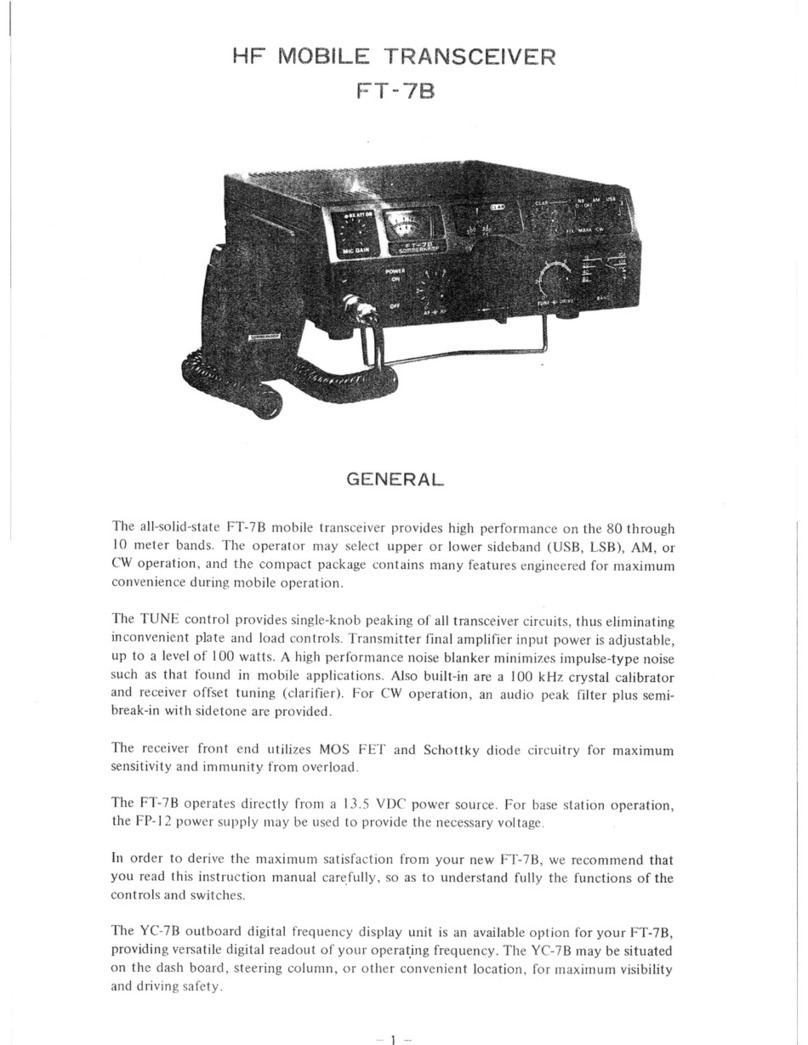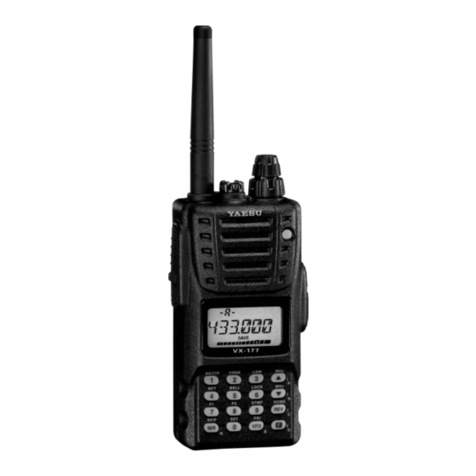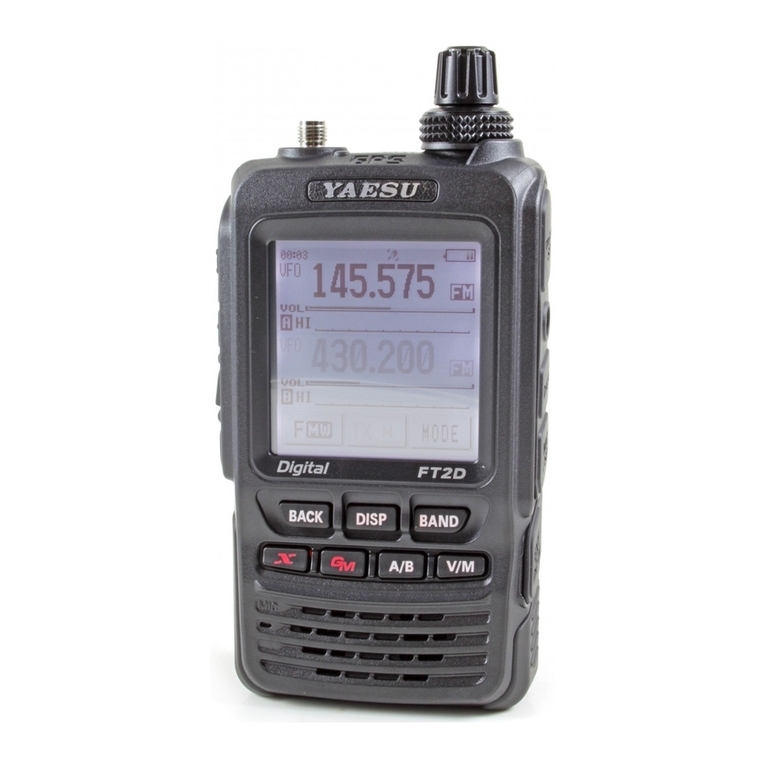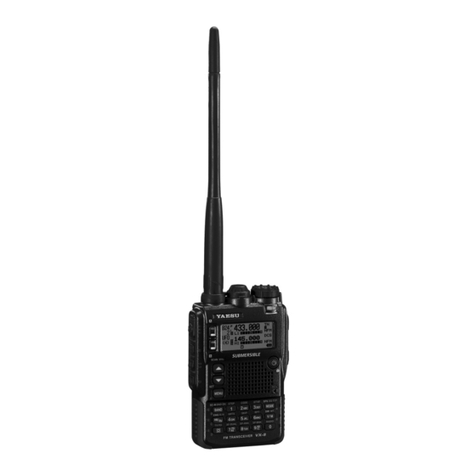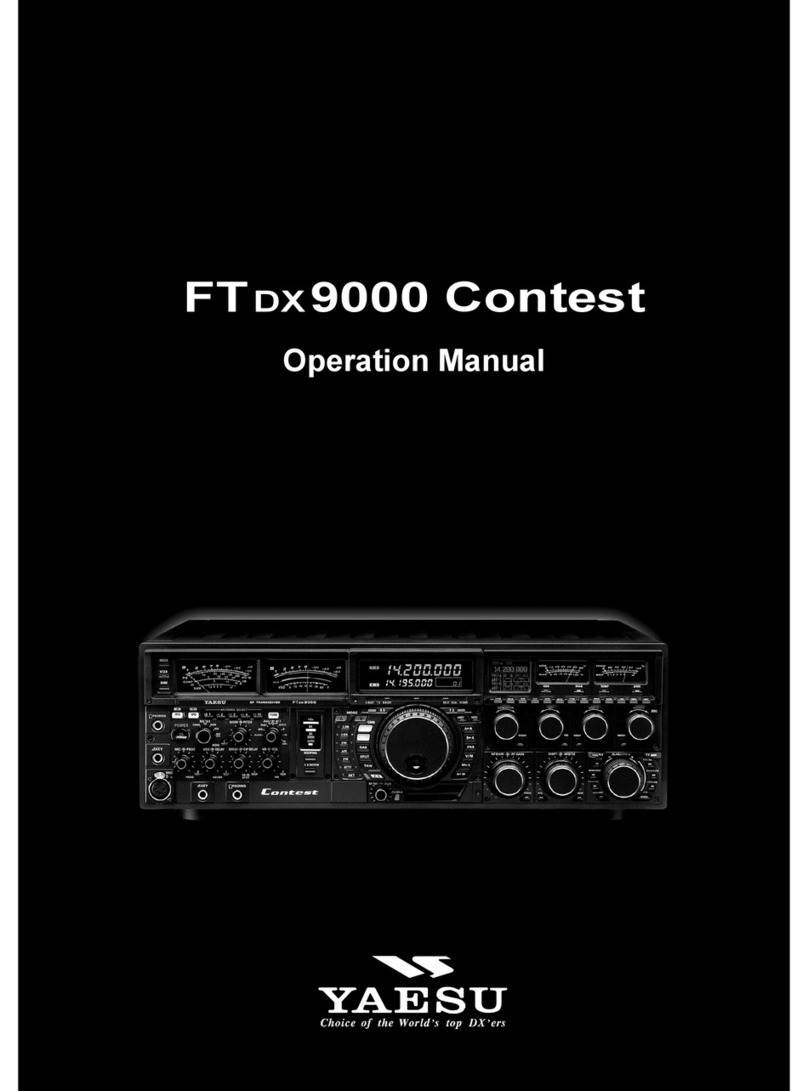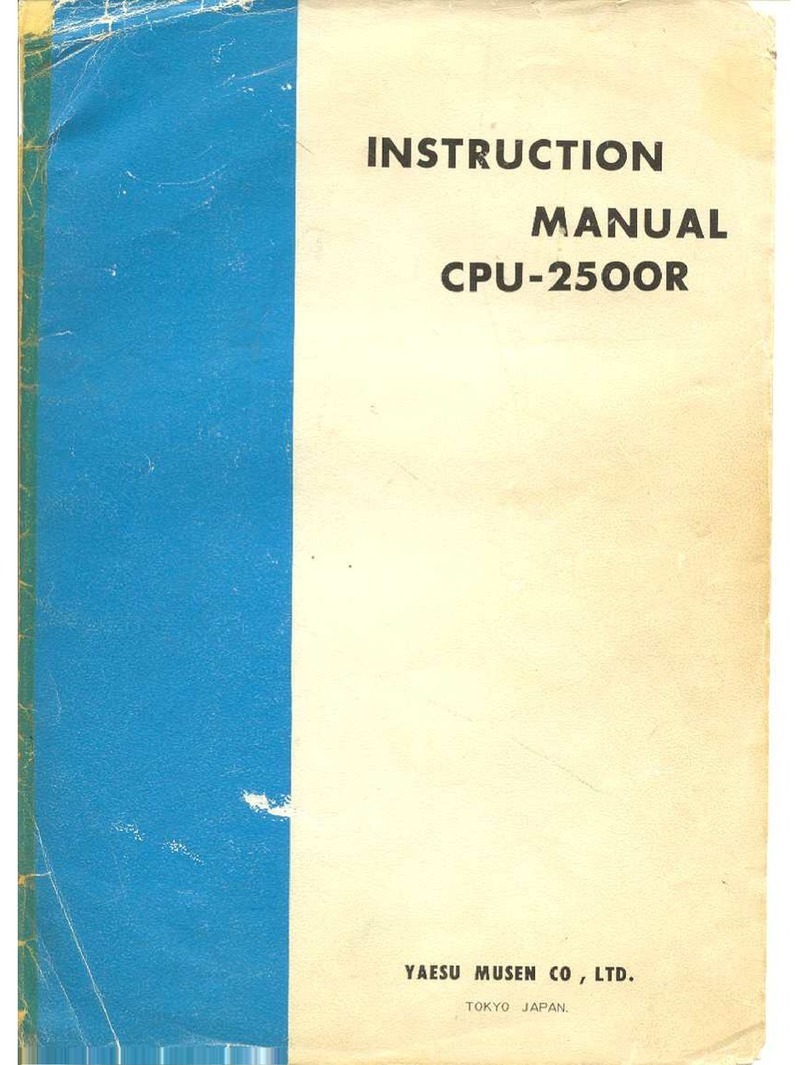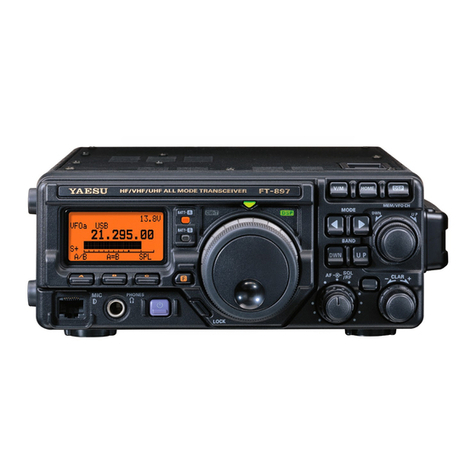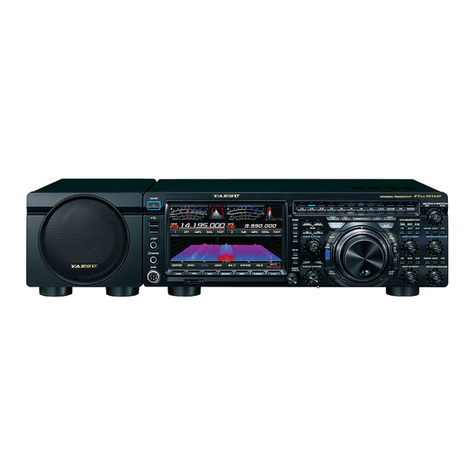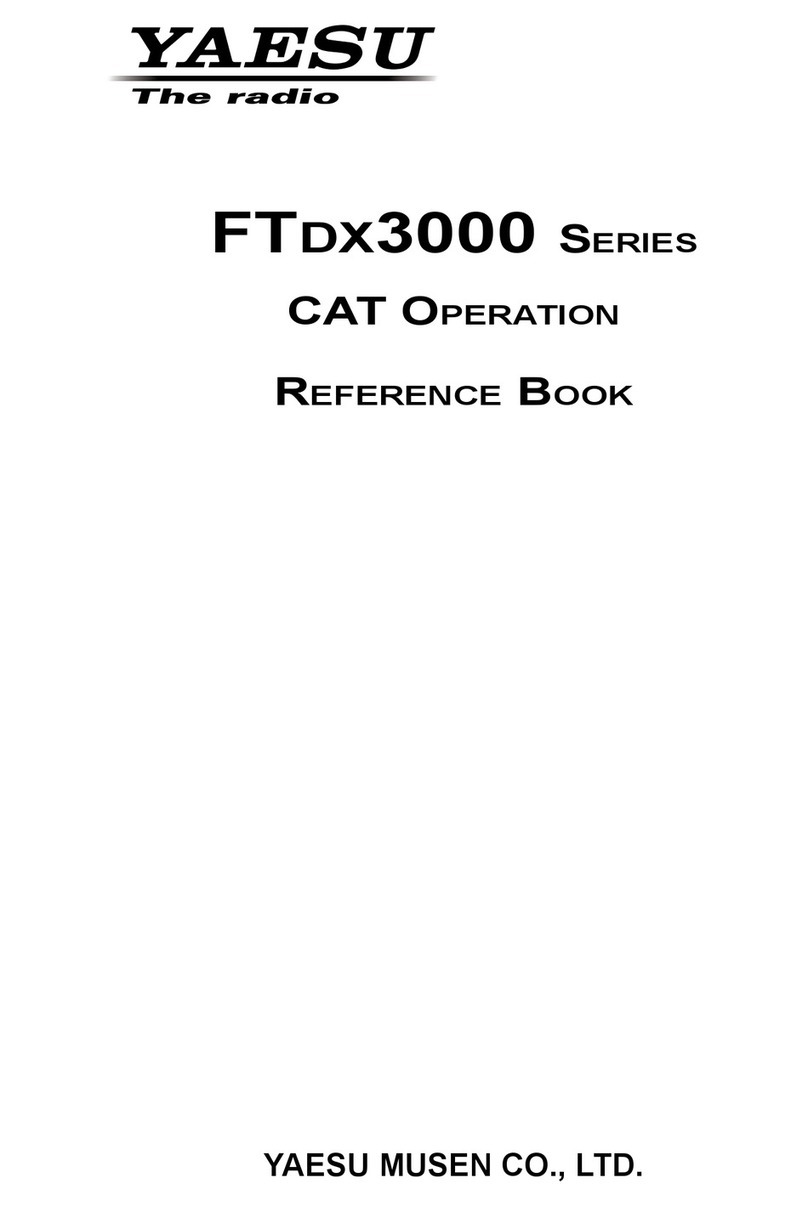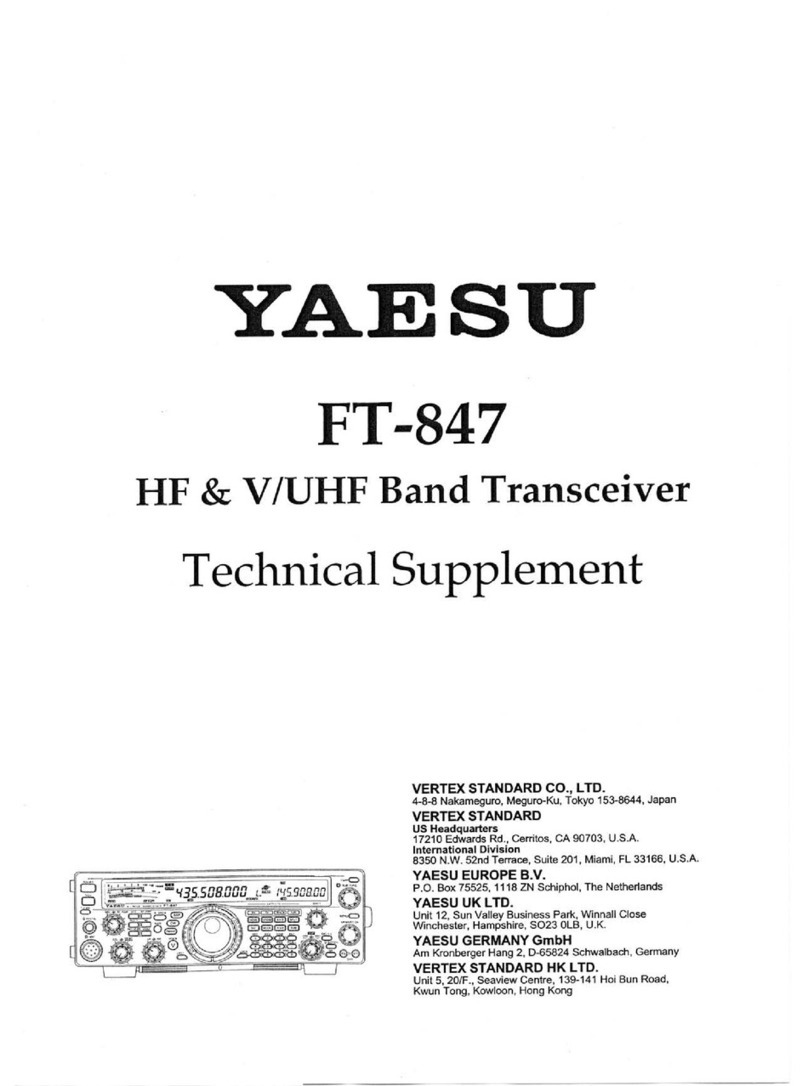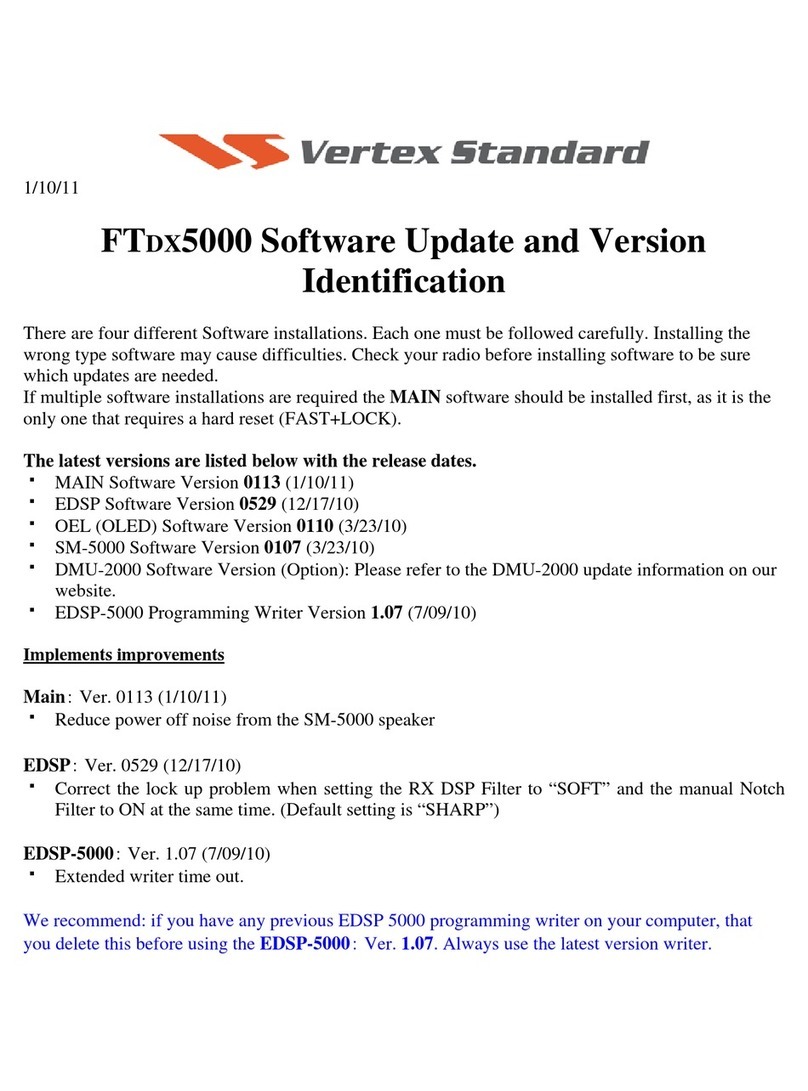Page 8 FT-897D OPERATING MANUAL
ANTENNA CONSIDERATIONS
The antenna systems connected to your FT-897D transceiver
are, of course, critically important in ensuring successful
communications. The FT-897D is designed for use with any
antenna system providing a 50 Ωresistive impedance at the
desired operating frequency. While minor excursions from
the 50 Ωspecification are of no consequence, the power
amplifier’s protection circuitry will begin to reduce the power
output of there is more than a 50% divergence from the speci-
fied impedance (less than 33 Ωor greater than 75 Ω, corre-
sponding to a Standing Wave Ratio (SWR) of 1.5:1).
Two antenna jacks are provided on the rear panel of the FT-
897D. The “HF/50 MHz ANT” jack is used for HF and 50
MHz, while the “144/430 MHz ANT” jack is used for 144
MHz and 430 MHz.
Guidelines for successful base and mobile station installa-
tions are shown below.
Mobile Antenna Installations
Mobile antennas for the HF bands, with the possible excep-
tion of those designed for 28 MHz, display very high “Q”
due to the fact that they must be physically shortened, then
resonated using a loading coil. Additional system bandwidth
may be realized using the Yaesu FC-30 Automatic Antenna
Tuner, which will present a 50 Ωimpedance to your trans-
ceiver on the 1.8 ~ 50 MHz bands so long as the SWR on
the coaxial line connected to the FC-30 is below 3:1.
On the VHF and UHF bands, coaxial line losses increase so
rapidly in the presence of SWR that we recommend that all
impedance matching to 50 Ωbe performed at the antenna
feedpoint.
Yaesu’s Active-Tuned Antenna System (ATAS-100/-120)
is a unique HF/VHF/UHF mobile antenna system, which
provides automatic tuning when used with the FT-897D.
See page 39 for full details on the ATAS-100/-120.
For VHF/UHF weak-signal (CW/SSB) operation, remem-
ber that the antenna polarization standard for these modes is
horizontal, not vertical, so you must use a loop or otherwise
horizontally-polarized antenna so as to avoid cross-polar-
ization loss of signal strength (which can be 20 dB or more!).
On HF, signals propagated via the ionosphere develop mixed
polarizations, so antenna selection may be made strictly on
mechanical considerations; vertical antennas are almost al-
ways utilized on HF for this reason.
Base Station Antenna Installations
When installing a “balanced” antenna such as a Yagi or di-
pole, remember that the FT-897D is designed for use with
an (unbalanced) coaxial feedline. Always use a balun or other
balancing device so as to ensure proper antenna system per-
formance.
Use high-quality 50 Ωcoaxial cable for the lead-in to your
FT-897D transceiver. All efforts at providing an efficient
antenna system will be wasted if poor quality, lossy coaxial
cable is used. Losses in coaxial lines increase as the fre-
quency increases, so a coaxial line with 0.5 dB of loss at 7
MHz may have 6 dB of loss at 432 MHz (thereby consum-
ing 75% of your transceiver’s power output!). As a general
rule, smaller-diameter coaxial cables tend to have higher
losses than larger-diameter cables, although the precise dif-
ferences depend on the cable construction, materials, and
the quality of the connectors used with the cable. See the
cable manufacturers’ specifications for details.
For reference, the chart below shows approximate loss fig-
ures for typically- available coaxial cables frequently used
in HF installations.
Loss in dB per 30 m (100 feet)
for Selected 50-ohm Coaxial Cables
Loss
Cable Type 1.8 MHz 28 MHz 432 MHz
RG-58A 0.55 2.60 >10
RG-58 Form 0.54 2.00 8.0
RG-8X 0.39 1.85 7.0
RG-8A, RG-213 0.27 1.25 5.9
RG-8 Form 0.22 0.88 3.7
Belden 9913 0.18 0.69 2.9
7/8” “Hardline” <0.1 0.25 1.3
Loss figures are approximate; consult cable manufacturer’s
catalogs for complete specifications.
Always locate antennas such that they can never come in
contact with outdoor power lines in the event of a catastrophic
support or power-pole structural failure. Ground your an-
tennas’ support structure(s) adequately, so as to dissipate
energy absorbed during a lightning strike. Install appropri-
ate lightning arrestors in the antenna coaxial cables (and
rotator cables, if rotary antennas are used).
In the event of an approaching electrical storm, disconnect
all antenna lead-in, rotator cables, and power cables com-
pletely from your station if the storm is not immediately
in your area. Do not allow disconnected cables to touch the
case of your FT-897D transceiver or accessories, as light-
ning can easily jump from the cable to the circuitry of your
transceiver via the case, causing irreparable damage. If a
lightning storm is in progress in your immediate area, do
not attempt to disconnect the cables, as you could be killed
instantly if lightning should strike your antenna structure or
a nearby power line.
If a vertical antenna is utilized, be certain that humans and/
or pets and farm animals are kept away both from the radiat-
ing element (to prevent electrical shock and RF exposure
danger) and the ground system (in the event of an electrical
storm). The buried radials of a ground-mounted vertical
antenna can carry lethal voltages outward from the center of
the antenna in the event of a direct lightning strike.
INSTALLATION

